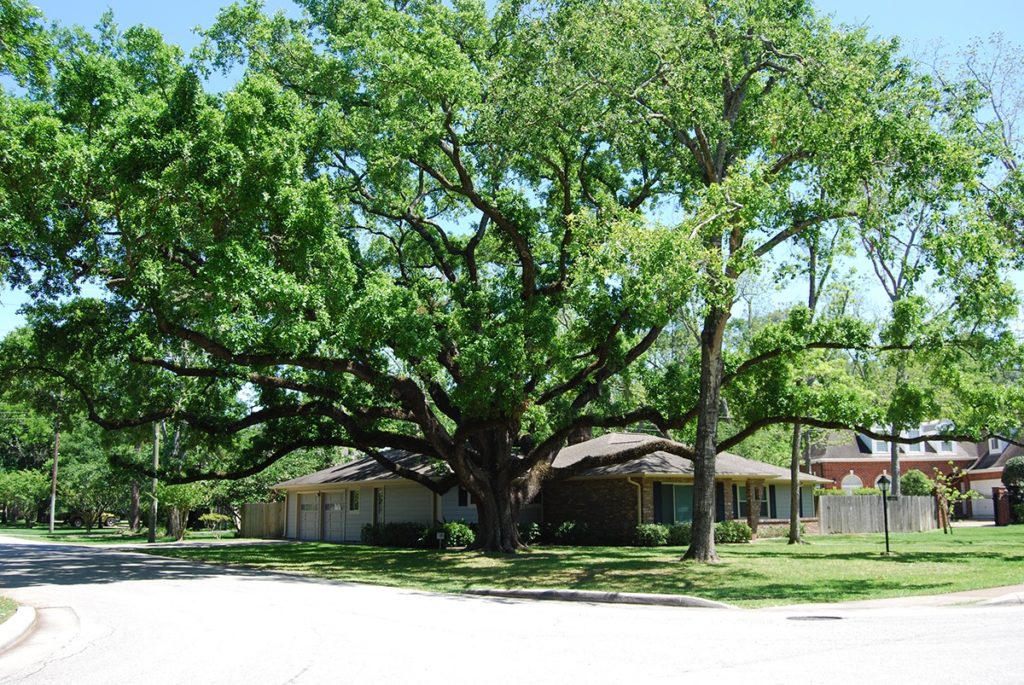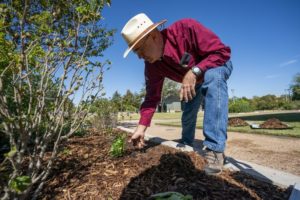Texas Arbor Day marks special opportunity for tree appreciation, planting
Optimum time for tree planting in Texas is fall, winter

Trees are a vital component of a healthy environment. Experts at Texas A&M University, recognizing the importance of Texas Arbor Day on Nov. 6, are offering tree planting tips and discussing ways the university is contributing to the wellbeing of trees and forests.
History and purpose
J. Sterling Morton, Pres. Grover Cleveland’s Secretary of Agriculture, established the first Arbor Day in the U.S. more than 140 years ago. Now it is observed throughout the nation on the last Friday in April. But because late fall and winter are the best times to plant trees in Texas, the Lone Star State celebrates the holiday on the first Friday in November.
“Texas Arbor Day celebrates the role of trees in our lives and promotes tree planting and care,” said Gretchen Riley, partnership coordinator in Urban and Community Forestry at the Texas A&M Forest Service (Texas A&M Forest Service). “It also gives us the opportunity to learn about the health benefits they provide for us every day.
Riley identified some of these health benefits as lowering blood pressure and heart rate, encouraging outdoor activities and generally healthier lifestyles, and decreasing mental fatigue by relaxing and restoring the mind.
“This is a great opportunity for us to get outside, learn about trees and how they protect and affect us,” he said.
Texas A&M leading state in tree and forest management
Each state has a forestry agency, but Texas was the first in the nation to establish its state forestry agency, Texas A&M Forest Service, as part of a land-grant college. The agency collaborates with communities to plant, care for and conserve trees. Texas A&M Forest Service staff work to empower local volunteers to make a positive impact in their communities and assist when disaster strikes with damage assessments, information, technical assistance and long-term recovery.
“With roughly 94% of the forestland in Texas privately owned, management of the state’s trees and forests—as well as the benefits they provide—rests in the hands of thousands of Texans,” Riley said.
Texas A&M Forest Service also serves as the lead state agency for fighting wildfires, 80% of which occur within 2 miles of a community, she said.
“Texas A&M Forest Service maintains a network of strategically-placed firefighters and equipment to respond to wildfires across the state,” Riley said, adding the agency also has programs aimed at building local capacity and working with fire departments and communities to provide training and grants for equipment.
Tree planting in Texas

Robert “Skip” Richter is a horticulture agent with the Texas A&M AgriLife Extension Service, a network of 250 county offices with nearly 900 professional educators offering agriculture-related services to every Texan. Richter hosts a call-in gardening show called “Garden Success” on KAMU-FM/HD 1, Texas A&M’s public broadcasting radio station.
Richter said because Texas is such a large state, it’s important to choose trees that are adapted to the soil and climate where you live.
“It is also important to choose trees that are long-lived, pest and disease resistant, and structurally strong because a tree is a long-term investment in your landscape,” he said.
For a list of the best trees to plant in your area of Texas, visit the Texas Tree Planting Guide.
Richter shared tips for successful tree planting:
- Dig a hole larger than the size of the cylinder of roots that comes out of the growing container, but no deeper.
- Cut any circling roots around the periphery of the cylinder. Cut roots will quickly produce new roots that will better extend out into the surrounding soil creating a well anchored tree. Circling roots left uncut can end up strangling the trunk as both the trunk and root encircling it grow in size over time.
- Set the tree in the hole making sure the topmost root is at the soil surface.
- Use soil from the hole to fill back in around the tree. Don’t put compost, potting soil or fertilizer in the planting hole.
- Create a circular berm or a raised mound of soil around the tree about three times wider than the root cylinder. This makes it easier to provide a good soaking to the roots during the first growing season after planting.
- Water the tree well to set the soil in around the roots.
- Mulch the soil surface with shredded leaves or bark about 3 inches deep but not piled up against the trunk. The wider the mulched area the better for the tree. Mulch deters grass and weed competition, which in turn keeps the lawn mower and string trimmer away from tender trunk tissues.
- Post-planting, water as needed to soak the root zone about 10 inches deep. Maintain moderately moist soil throughout the entire area beneath the branch spread of the tree, especially during the first and second long summer seasons.
Richter said to create a healthy, strong tree, it is critical to train it well during the first five-10 years, and to continue to prune correctly after that.
Virtual Texas Arbor Day celebration
Texas A&M invites everyone to join in virtual activities to recognize Texas Arbor Day. Visit Texas A&M Forest Service on Facebook, Instagram and Twitter, and Texas A&M AgriLife Extension Service on Facebook, Instagram, Pinterest and YouTube.
View the original article on Texas A&M Today.



